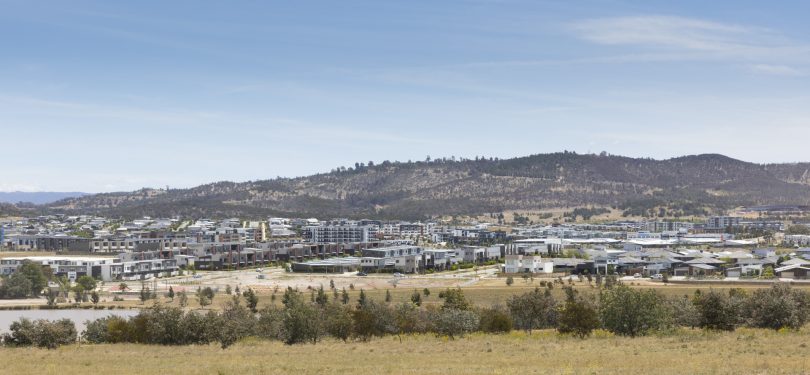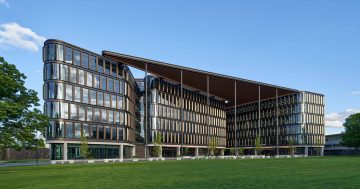
The new suburb of Coombs in the Molonglo Valley. Photo: File.
The ACT’s new architects chief has laid down a challenge to not just planners and builders but to us, the people who feel big is better, air-con will save the day and have given up on having a garden.
Institute of Architects ACT president Shannon Battison staked out her ground last week lamenting a cookie-cutter approach to planning, overdevelopment of blocks and the inadequacies of the energy efficiency rating system.
A specialist in climate responsive design, she says the ACT can do much better than the present six-star system without it costing the earth, especially if our homes are actually designed for the ACT environment, not for Sydney or Melbourne as so many project houses are.
For the bigger end of town, she argued the case for sticking with an architect all the way through beyond the shiny renders if we really want to see better building and quality outcomes.
As one would expect from a professional body, she is representing the interest of her members but architects are more than just about buildings. As Ms Battison says, it’s the spaces we inhabit inside and outside that are important.
So many of our new suburbs are leaving little room for the spaces that can define a quality of life – the trees and vegetation, the green sleeve that can cool a house and provide a cushion against the built environment.
Even in the older suburbs where knockdown-rebuilds are common, the new and often bigger home takes up the entire block, butting up against neighbours and detracting from the very amenity that has attracted owners to the leafy inner south and north.
One builder I have spoken to endeavours, sometimes in vain, to convince owners that with good design the new home can be smaller, cost less and be more efficient, as well as leaving room for a garden.

Shannon Battison has raised some serious questions for planners, builders and residents. Photo: Supplied.
This overdevelopment continues to happen despite government climate change policies, planning rules, builder advice and common sense.
Some might say the high cost of land is forcing people to extract the maximum value from their block but they are making choices they and the community will regret.
Ironically, our increasingly searing summers and water scarcity are contributing to the artificial turf and red gravel phenomenon and reluctance to have even a maintenance-free garden.
With the cost of water being as it is, some might say why bother investing in something that will need ongoing care and will probably wither with the first heatwave of summer.
Of course, it is a false economy if the only way to survive that summer is to lock up the house and switch on the air-con, even if you have solar panels to defray the cost. The overall result will be a heat island suburb, no matter how many street trees the government plants.
For Ms Battison, home is the whole space, and it is what makes many of Canberra’s suburbs such beautiful and welcoming places to live, with their tree cover, easements, parks and off-street paths.
The other issue she took up is diversity and the sameness of design, size and typology that are characteristic of newer suburbs. She is right to argue that a mass of four-bedroom houses does not a community make. Nor does a street of multi-unit blocks.
Our suburbs should be home to all sorts of people not just families in one phase, empty nesters and the elderly in another or the young twenty somethings starting out.
We need to demand more of our planners and developers, and question our own choices. If architects can help us do that, curb the excesses of densification that Canberra appears committed to, and help prevent shoddy development outcomes, then more power to them.














